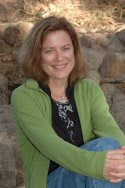 When I think of barren lands, barren wombs, barren lives, the image that comes into my mind is Seymour Island on the Weddell Sea side of the Antarctic Peninsula. Nothing grows here. I suppose a bit of lichen must cling to the sunny side of some wet rock, but I can’t find anything that isn’t brown or white. Even the mummified seal, however mystical, lacks color. The only things that move of their own volition are the wind, the
When I think of barren lands, barren wombs, barren lives, the image that comes into my mind is Seymour Island on the Weddell Sea side of the Antarctic Peninsula. Nothing grows here. I suppose a bit of lichen must cling to the sunny side of some wet rock, but I can’t find anything that isn’t brown or white. Even the mummified seal, however mystical, lacks color. The only things that move of their own volition are the wind, the  birds in the sky, and the penguins.
birds in the sky, and the penguins.The mummified seal suggests that the occasional pinniped also hauls out onto the ice that borders this desolate place. How is it then, in the absence of life, that life becomes so much more vibrant and real? I venture to guess it is because there is nothing standing between me and the beating of my heart.
No trees bar my view of the hilltops. None stand between me and the sea. Until the wind draws a curtain of cloud and snow across the horizon, I can see the bow-legged edge of water and sky. In the blue-green water, boulders shimmer, and I can be
 lieve them to be the petrified eggs of dinosaurs. In my pack I carry a collection of sharks' teeth set aside for further examination by the paleontologists. Sixty-five million years ago sharks swam where I stand. Then the weather changed, the sharks retreated. Time passed. Twenty-five or thirty million years later giant penguins—6 feet tall—lumbered across this land. I hold their bones in my hand, close my eyes, and listen.
lieve them to be the petrified eggs of dinosaurs. In my pack I carry a collection of sharks' teeth set aside for further examination by the paleontologists. Sixty-five million years ago sharks swam where I stand. Then the weather changed, the sharks retreated. Time passed. Twenty-five or thirty million years later giant penguins—6 feet tall—lumbered across this land. I hold their bones in my hand, close my eyes, and listen.Nothing lasts. The earth is patient. Why am I in such a hurry? What is missing in this sun, this blue-green water, these friends? What better thing will I find tomorrow or in ten thousand years?

2 comments:
Kate,
Oh, if only we could be around in ten years. In fact, as you know, there is no guarantee that we will be around in even one year. Life is precious.
There is always hope.
Post a Comment